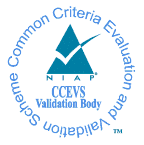The National Institute of Standards and Technology (NIST) is an agency of the United States Department of Commerce whose mission is to promote American innovation and industrial competitiveness. NIST's activities are organized into physical science laboratory programs that include nanoscale science and technology, engineering, information technology, neutron research, material measurement, and physical measurement. From 1901 to 1988, the agency was named the National Bureau of Standards.
An authenticator is a means used to confirm a user's identity, that is, to perform digital authentication. A person authenticates to a computer system or application by demonstrating that he or she has possession and control of an authenticator. In the simplest case, the authenticator is a common password.
Biometrics are body measurements and calculations related to human characteristics and features. Biometric authentication is used in computer science as a form of identification and access control. It is also used to identify individuals in groups that are under surveillance.

RSA Security LLC, formerly RSA Security, Inc. and trade name RSA, is an American computer and network security company with a focus on encryption and decryption standards. RSA was named after the initials of its co-founders, Ron Rivest, Adi Shamir and Leonard Adleman, after whom the RSA public key cryptography algorithm was also named. Among its products is the SecurID authentication token. The BSAFE cryptography libraries were also initially owned by RSA. RSA is known for incorporating backdoors developed by the NSA in its products. It also organizes the annual RSA Conference, an information security conference.
The Federal Information Processing Standard Publication 140-2,, is a U.S. government computer security standard used to approve cryptographic modules. The title is Security Requirements for Cryptographic Modules. Initial publication was on May 25, 2001, and was last updated December 3, 2002.
ISO 19092 Financial Services - Biometrics, released as ISO 19092 Financial Services - Biometrics - Part 1: Security framework, is an ISO standard and describes the adequate information management security controls and the proper procedures for using biometrics as an authentication mechanism for secure remote electronic access or local physical access controls for the financial and other critical infrastructure industries.
Software assurance (SwA) is a critical process in software development that ensures the reliability, safety, and security of software products. It involves a variety of activities, including requirements analysis, design reviews, code inspections, testing, and formal verification. One crucial component of software assurance is secure coding practices, which follow industry-accepted standards and best practices, such as those outlined by the Software Engineering Institute (SEI) in their CERT Secure Coding Standards (SCS).
Information security standards are techniques generally outlined in published materials that attempt to protect a user's or organization's cyber environment. This environment includes users themselves, networks, devices, all software, processes, information in storage or transit, applications, services, and systems that can be connected directly or indirectly to networks.
The Australian Intelligence Community (AIC) and the National Intelligence Community (NIC) or National Security Community of the Australian Government are the collectives of statutory intelligence agencies, policy departments, and other government agencies concerned with protecting and advancing the national security and national interests of the Commonwealth of Australia. The intelligence and security agencies of the Australian Government have evolved since the Second World War and the Cold War and saw transformation and expansion during the Global War on Terrorism with military deployments in Afghanistan, Iraq and against ISIS in Syria. Key international and national security issues for the Australian Intelligence Community include terrorism and violent extremism, cybersecurity, transnational crime, the rise of China, and Pacific regional security.
The National Information Assurance Partnership (NIAP) is a United States government initiative to meet the security testing needs of both information technology consumers and producers that is operated by the National Security Agency (NSA), and was originally a joint effort between NSA and the National Institute of Standards and Technology (NIST).

The Institute for Defense Analyses (IDA) is an American non-profit corporation that administers three federally funded research and development centers (FFRDCs) – the Systems and Analyses Center (SAC), the Science and Technology Policy Institute (STPI), and the Center for Communications and Computing (C&C) – to assist the United States government in addressing national security issues, particularly those requiring scientific and technical expertise. It is headquartered in Alexandria, Virginia.

Common Criteria Evaluation and Validation Scheme (CCEVS) is a United States Government program administered by the National Information Assurance Partnership (NIAP) to evaluate security functionality of an information technology with conformance to the Common Criteria international standard. The new standard uses Protection Profiles and the Common Criteria Standards to certify the product. This change happened in 2009. Their stated goal in making the change was to ensure achievable, repeatable and testable evaluations.
Electronic authentication is the process of establishing confidence in user identities electronically presented to an information system. Digital authentication, or e-authentication, may be used synonymously when referring to the authentication process that confirms or certifies a person's identity and works. When used in conjunction with an electronic signature, it can provide evidence of whether data received has been tampered with after being signed by its original sender. Electronic authentication can reduce the risk of fraud and identity theft by verifying that a person is who they say they are when performing transactions online.
AGNITIO S.L. was a voice biometrics technology company, headquartered in Madrid, Spain. Biometric authentication uses unique biological characteristics to verify an individual’s identity. It’s harder to spoof and considered more convenient for some users since they do not have to remember passwords or worry about passwords being stolen. Agnitio provides voice biometrics services for homeland security and corporate clients.
The Federal Information Processing Standard Publication 140-3 is a U.S. government computer security standard used to approve cryptographic modules. The title is Security Requirements for Cryptographic Modules. Initial publication was on March 22, 2019 and it supersedes FIPS 140-2.

IEEE Smart Grid is an initiative launched by IEEE to help provide expertise and guidance for individuals and organizations involved in the modernization and optimization of the power grid, better known as the "smart grid". IEEE Smart Grid encompasses an array of activities, including development of new smart grid-related standards, best practices, publications, and conferences and educational opportunities.
ISO/IEC JTC 1/SC 37 Biometrics is a standardization subcommittee in the Joint Technical Committee ISO/IEC JTC 1 of the International Organization for Standardization (ISO) and the International Electrotechnical Commission (IEC), which develops and facilitates standards within the field of biometrics. The international secretariat of ISO/IEC JTC 1/SC 37 is the American National Standards Institute (ANSI), located in the United States.
Smart Grid Interoperability Panel or SGIP is an organization that defines requirements for a smarter electric grid by driving interoperability, the use of standard, and collaborating across organizations to address gaps and issue hindering the deployment of smart grid technologies.

Neurotechnology is an algorithm and software development company founded in Vilnius, Lithuania in 1990.

Standardisation Testing and Quality Certification (STQC) Directorate, established in 1980, is an authoritative body offering quality assurance services to IT and Electronics domains.






